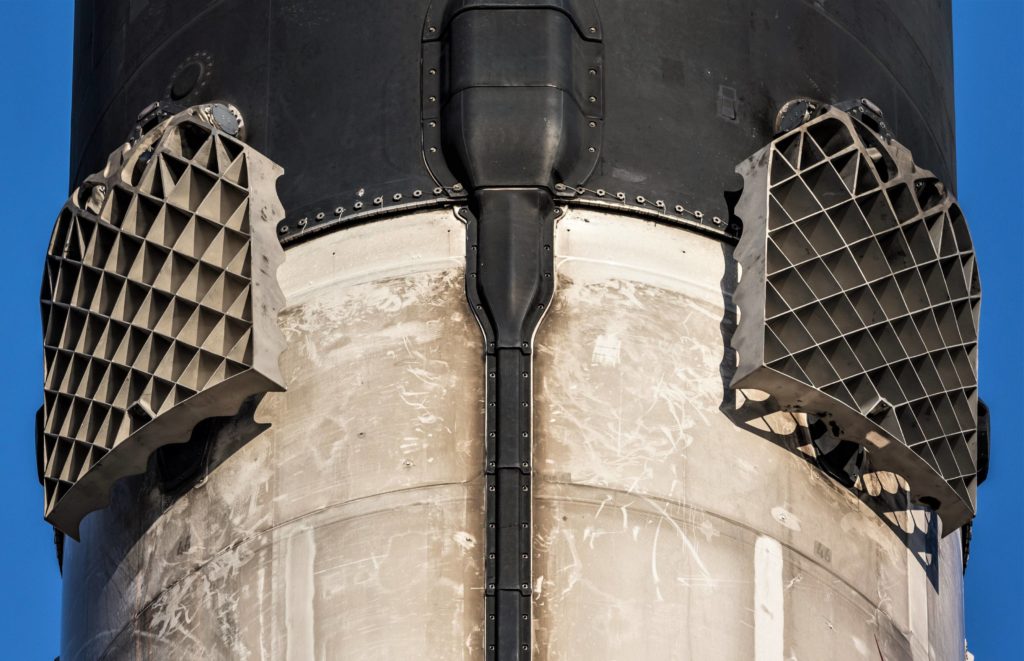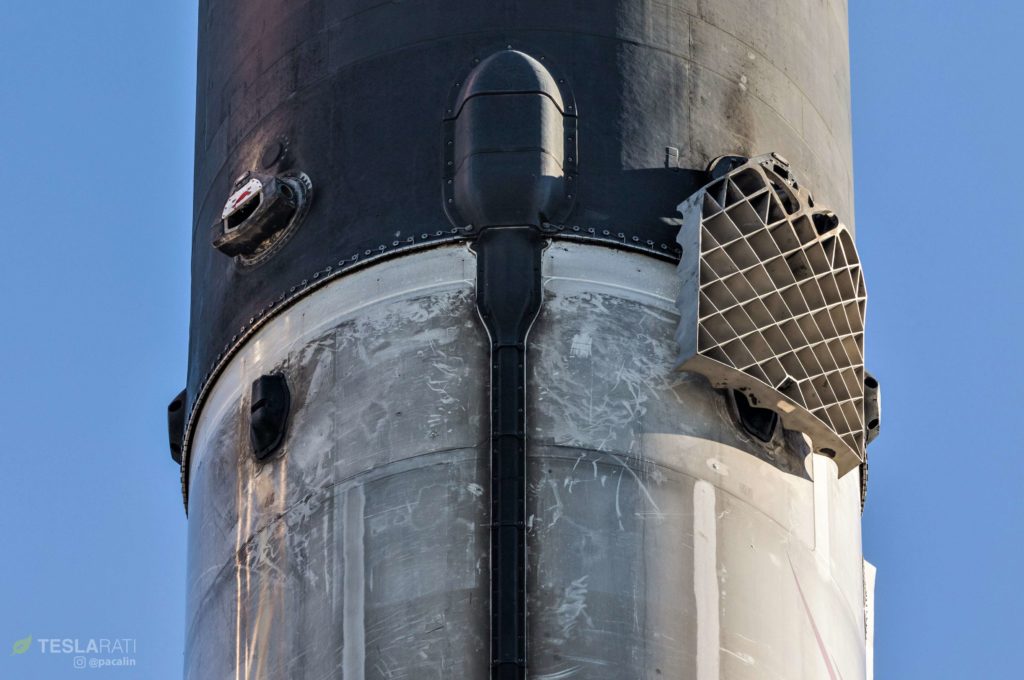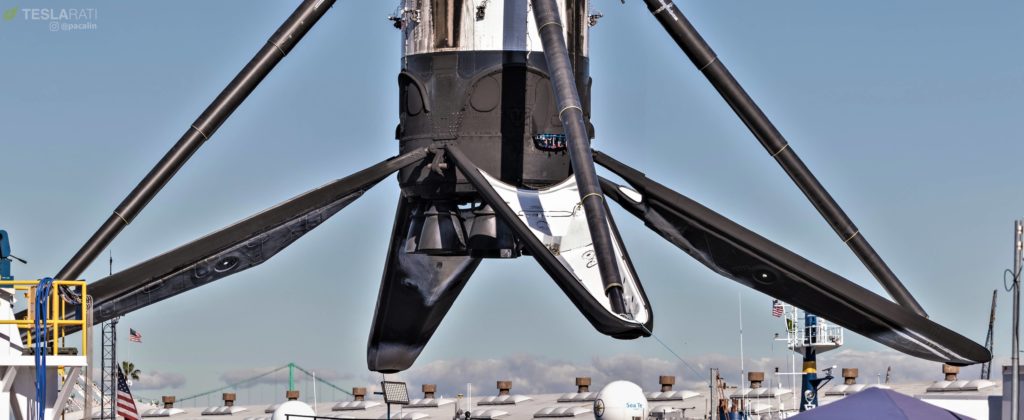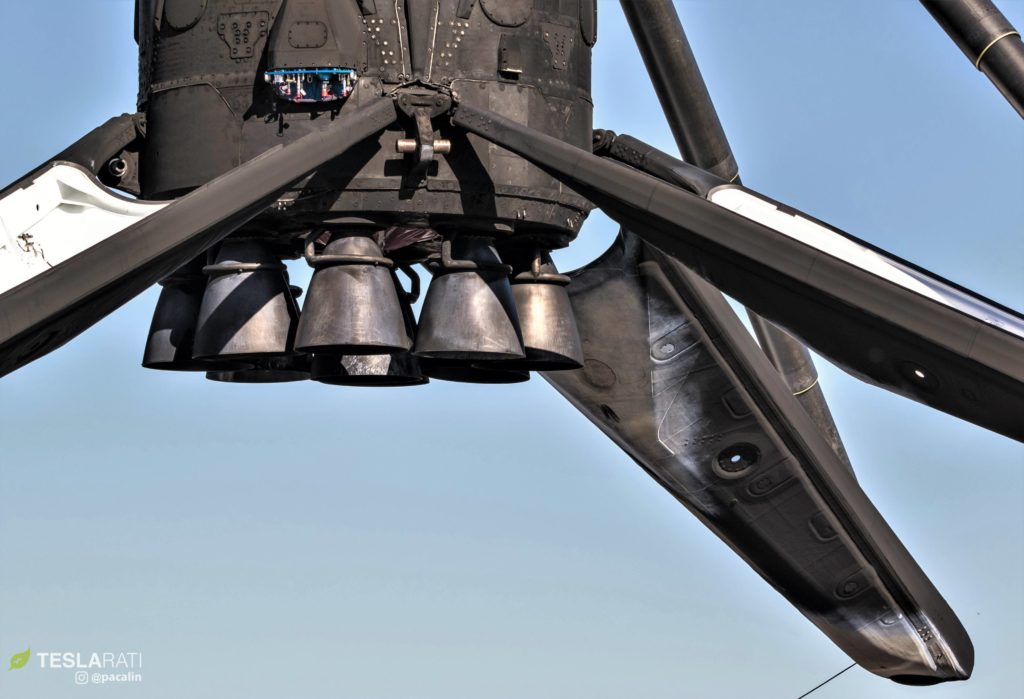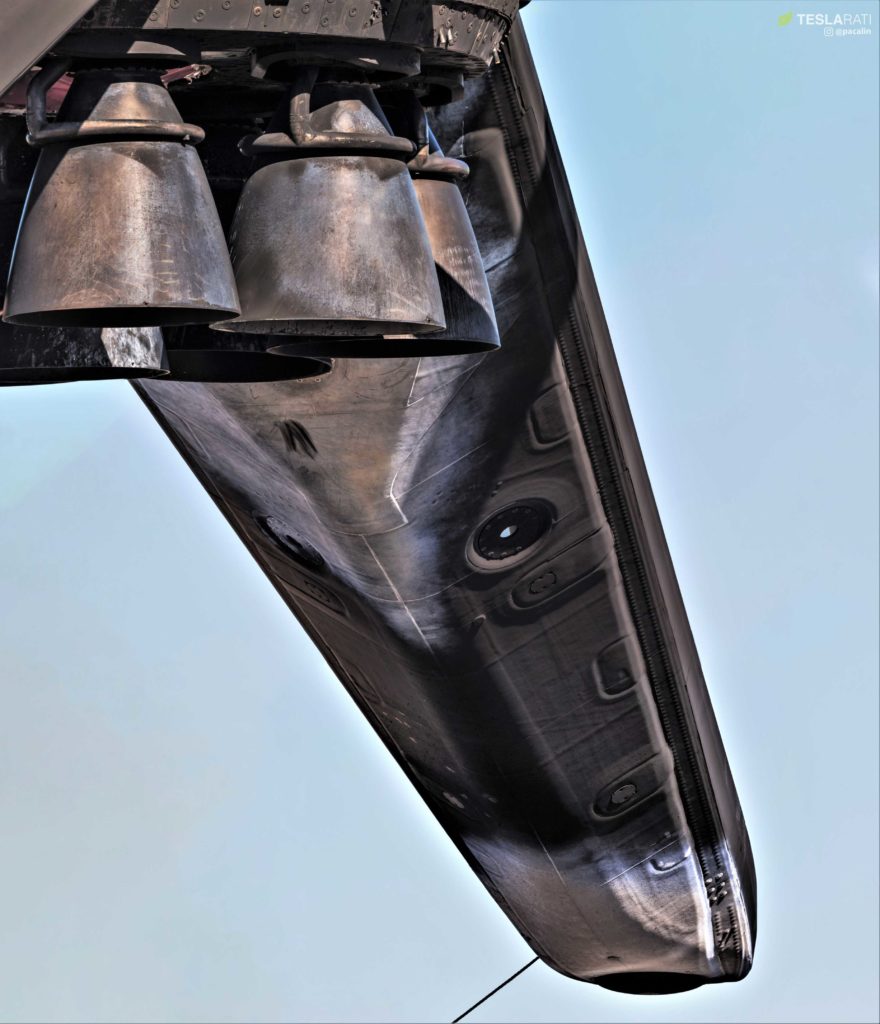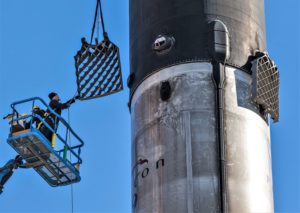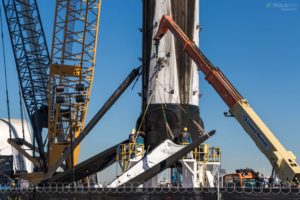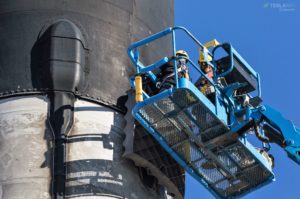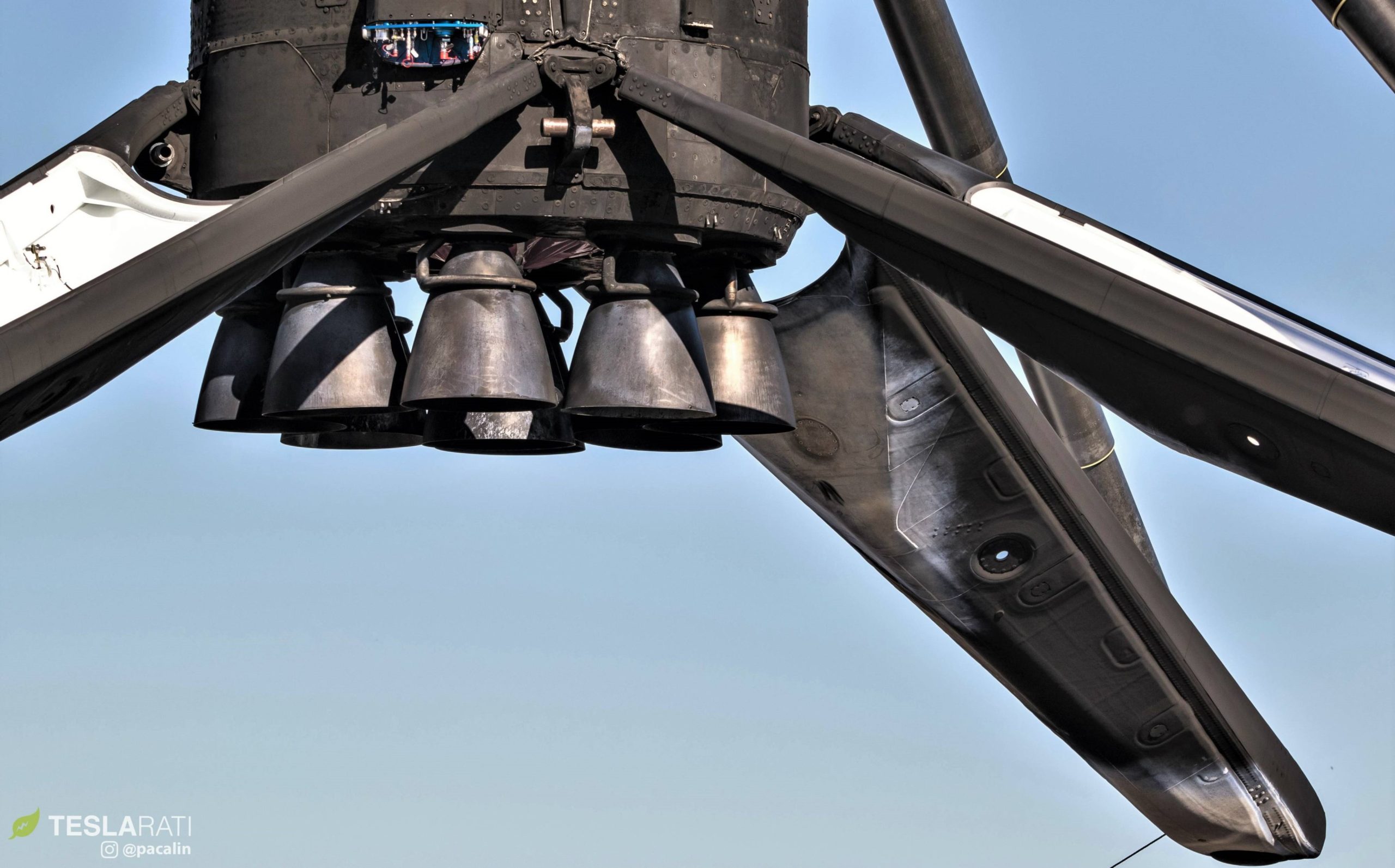
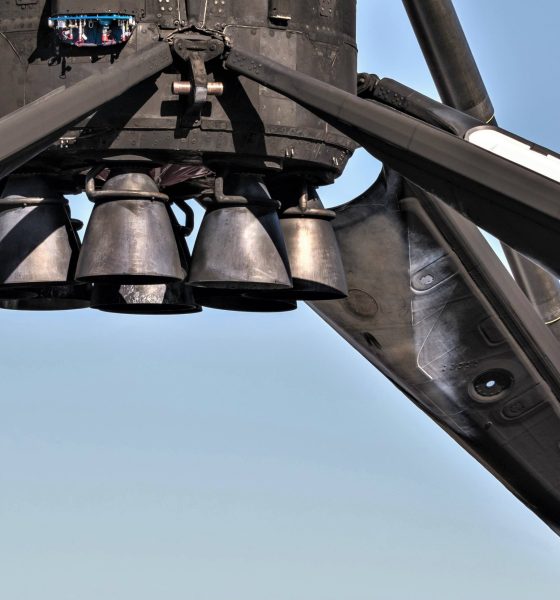
News
SpaceX caps major Falcon 9 Block 5 reuse with spectacular Port of LA recovery
SpaceX has completed what might be its most important Falcon 9 reuse yet after successfully launching and recovering booster B1046 for the third time in just six months. Prior to this launch, the company had never before flown a reused Falcon 9 booster more than once.
Making way for a probable fourth launch in the near future, B1046’s Port of Los Angeles return was marked by a stream of spectacular visuals as seasoned SpaceX recovery technicians transferred the booster from drone ship to land, performed initial inspections, and prepared it for transport back to Hawthorne, where it will undergo (hopefully minimal) refurbishment.
Falcon 9 B1046.3 went horizontal this afternoon after spending 6 days at port of LA. #spacex @Teslarati pic.twitter.com/QqTpMFvl0F
— Pauline Acalin (@w00ki33) December 11, 2018
Displaying inspiring dedication, Teslarati photographer Pauline Acalin managed to stick with B1046 for a major portion of the six days it spent on the docks, despite a rare spate of rainy and downright stormy days in Los Angeles. Her patience was awarded with a number of beautiful photos documenting nearly every significant aspect of any given Falcon 9 booster recovery, ranging from the lift from drone ship to dockside and the removal of all four titanium grid fins to the rocket’s flip from a vertical to a horizontal orientation ahead of road transport back to SpaceX’s Hawthorne factory.
Above all else, the most noteworthy aspect of Falcon 9 B1046’s third return to port is just how unharmed the rocket appears, at least from an external perspective. The booster has grown a fairly healthy triple coating of kerosene soot from its three reentry and landing burns, thick enough that Falcon 9’s mirror-shiny white skin is barely visible on the lower (RP-1) propellant tank. At this point, it seems that SpaceX has concluded that any possible performance loss from those soot layers are small enough to be negligible.
- Falcon 9 B1046 stands proud and sooty after its third successful launch. (Pauline Acalin)
- Goodbye, grid fin! (Pauline Acalin)
- Falcon 9 is lifted from drone ship JRTI to SpaceX’s Port of LA dock space. (Pauline Acalin)
- Shiny(ish)! (Pauline Acalin)
- It’s unclear what exactly causes it, but Falcon 9 Block 5’s newly heat-shielded legs turn a rather bright white after being scorched during booster landings. (Pauline Acalin)
In an operational sense, SpaceX’s Falcon 9 recovery procedures and the technicians that perform the actual task of recovery seem to be approaching the work with an attitude that fits better in the realm of commercial aviation than in what is perceived as modern rocketry (clean rooms, surgical precision, etc.). Both the procedures and technicians seem to have been refined into what now runs like a well-oiled machine, wrapping up the complex and pathfinding task of recovering a thrice-flown Falcon 9 booster in less than a week from its drone ship landing to Hawthorne arrival.
The condition of B1046 could well make or break the future of the Falcon 9 family, as any significant departure from Block 5’s design intentions could cut the operational lifetime of the ~10 boosters already produced by dozens of fleet-wide flights.
- Falcon 9 B1046’s flight-proven titanium grid fins are carefully removed. (Pauline Acalin)
- Legs, too! (Pauline Acalin)
- With any luck, B1046’s nine Merlin 1D engines may well see another orbital-class launch in the near future. (Pauline Acalin)
- Never forget your aerospace-grade pool noodles, kids. (Pauline Acalin)
On the other hand, a rapid and relatively painless post-recovery inspection and a general bill of nominal health could – pending customer comfort and SpaceX pricing it right – open the floodgates for the company’s fleet of (optimally) reusable rocket boosters. Even if it turns on that Falcon 9 Block 5 boosters almost invariably demand $10M+ in extensive refurbishment after every launch and can only manage a max of 10 launches before heading to the scrapyard, SpaceX could quite literally become untouchable on the global launch market and remain so for a minimum of 5+ years.
First grid fin has been removed from the 3x flown Falcon 9 standing at port of LA. Been wanting to see this happen for years. So NEAT! #spacex @Teslarati pic.twitter.com/iICf7Pypn8
— Pauline Acalin (@w00ki33) December 8, 2018
So long as the company can preserve the Falcon family’s impressive and ever-growing heritage of reliability alongside industry-leading reusability, there isn’t a company or country in the world that could beat SpaceX’s business model if it ever came down to a contract competition death-match, so to speak, not for another 5-10 years. It may never come to that, but that capability will – at the bare minimum – give SpaceX a nearly unbeatable upper hand for launching its own global constellation of internet satellites, known as Starlink.
For prompt updates, on-the-ground perspectives, and unique glimpses of SpaceX’s rocket recovery fleet check out our brand new LaunchPad and LandingZone newsletters!

Elon Musk
Elon Musk’s X will start using a Tesla-like software update strategy
The initiative seems designed to accelerate updates to the social media platform, while maintaining maximum transparency.

Elon Musk’s social media platform X will adopt a Tesla-esque approach to software updates for its algorithm.
The initiative seems designed to accelerate updates to the social media platform, while maintaining maximum transparency.
X’s updates to its updates
As per Musk in a post on X, the social media company will be making a new algorithm to determine what organic and advertising posts are recommended to users. These updates would then be repeated every four weeks.
“We will make the new 𝕏 algorithm, including all code used to determine what organic and advertising posts are recommended to users, open source in 7 days. This will be repeated every 4 weeks, with comprehensive developer notes, to help you understand what changed,” Musk wrote in his post.
The initiative somewhat mirrors Tesla’s over-the-air update model, where vehicle software is regularly refined and pushed to users with detailed release notes. This should allow users to better understand the details of X’s every update and foster a healthy feedback loop for the social media platform.
xAI and X
X, formerly Twitter, has been acquired by Elon Musk’s artificial intelligence startup, xAI last year. Since then, xAI has seen a rapid rise in valuation. Following the company’s the company’s upsized $20 billion Series E funding round, estimates now suggest that xAI is worth tens about $230 to $235 billion. That’s several times larger than Tesla when Elon Musk received his controversial 2018 CEO Performance Award.
As per xAI, the Series E funding round attracted a diverse group of investors, including Valor Equity Partners, Stepstone Group, Fidelity Management & Research Company, Qatar Investment Authority, MGX, and Baron Capital Group, among others. Strategic partners NVIDIA and Cisco Investments also continued support for building the world’s largest GPU clusters.
News
Tesla FSD Supervised wins MotorTrend’s Best Driver Assistance Award
The decision marks a notable reversal for the publication from prior years, with judges citing major real-world improvements that pushed Tesla’s latest FSD software ahead of every competing ADAS system.

Tesla’s Full Self-Driving (Supervised) system has been named the best driver-assistance technology on the market, earning top honors at the 2026 MotorTrend Best Tech Awards.
The decision marks a notable reversal for the publication from prior years, with judges citing major real-world improvements that pushed Tesla’s latest FSD software ahead of every competing ADAS system. And it wasn’t even close.
MotorTrend reverses course
MotorTrend awarded Tesla FSD (Supervised) its 2026 Best Tech Driver Assistance title after extensive testing of the latest v14 software. The publication acknowledged that it had previously criticized earlier versions of FSD for erratic behavior and near-miss incidents, ultimately favoring rivals such as GM’s Super Cruise in earlier evaluations.
According to MotorTrend, the newest iteration of FSD resolved many of those shortcomings. Testers said v14 showed far smoother behavior in complex urban scenarios, including unprotected left turns, traffic circles, emergency vehicles, and dense city streets. While the system still requires constant driver supervision, judges concluded that no other advanced driver-assistance system currently matches its breadth of capability.
Unlike rival systems that rely on combinations of cameras, radar, lidar, and mapped highways, Tesla’s FSD operates using a camera-only approach and is capable of driving on city streets, rural roads, and freeways. MotorTrend stated that pure utility, the ability to handle nearly all road types, ultimately separated FSD from competitors like Ford BlueCruise, GM Super Cruise, and BMW’s Highway Assistant.
High cost and high capability
MotorTrend also addressed FSD’s pricing, which remains significantly higher than rival systems. Tesla currently charges $8,000 for a one-time purchase or $99 per month for a subscription, compared with far lower upfront and subscription costs from other automakers. The publication noted that the premium is justified given FSD’s unmatched scope and continuous software evolution.
Safety remained a central focus of the evaluation. While testers reported collision-free operation over thousands of miles, they noted ongoing concerns around FSD’s configurable driving modes, including options that allow aggressive driving and speeds beyond posted limits. MotorTrend emphasized that, like all Level 2 systems, FSD still depends on a fully attentive human driver at all times.
Despite those caveats, the publication concluded that Tesla’s rapid software progress fundamentally reshaped the competitive landscape. For drivers seeking the most capable hands-on driver-assistance system available today, MotorTrend concluded Tesla FSD (Supervised) now stands alone at the top.
News
Elon Musk’s Grokipedia surges to 5.6M articles, almost 79% of English Wikipedia
The explosive growth marks a major milestone for the AI-powered online encyclopedia, which was launched by Elon Musk’s xAI just months ago.

Elon Musk’s Grokipedia has grown to an impressive 5,615,201 articles as of today, closing in on 79% of the English Wikipedia’s current total of 7,119,376 articles.
The explosive growth marks a major milestone for the AI-powered online encyclopedia, which was launched by Elon Musk’s xAI just months ago. Needless to say, it would only be a matter of time before Grokipedia exceeds English Wikipedia in sheer volume.
Grokipedia’s rapid growth
xAI’s vision for Grokipedia emphasizes neutrality, while Grok’s reasoning capabilities allow for fast drafting and fact-checking. When Elon Musk announced the initiative in late September 2025, he noted that Grokipedia would be an improvement to Wikipedia because it would be designed to avoid bias.
At the time, Musk noted that Grokipedia “is a necessary step towards the xAI goal of understanding the Universe.”
Grokipedia was launched in late October, and while xAI was careful to list it only as Version 0.1 at the time, the online encyclopedia immediately earned praise. Wikipedia co-founder Larry Sanger highlighted the project’s innovative approach, noting how it leverages AI to fill knowledge gaps and enable rapid updates. Netizens also observed how Grokipedia tends to present articles in a more objective manner compared to Wikipedia, which is edited by humans.
Elon Musk’s ambitious plans
With 5,615,201 total articles, Grokipedia has now grown to almost 79% of English Wikipedia’s article base. This is incredibly quick, though Grokipedia remains text-only for now. xAI, for its part, has now updated the online encyclopedia’s iteration to v0.2.
Elon Musk has shared bold ideas for Grokipedia, including sending a record of the entire knowledge base to space as part of xAI’s mission to preserve and expand human understanding. At some point, Musk stated that Grokipedia will be renamed to Encyclopedia Galactica, and it will be sent to the cosmos.
“When Grokipedia is good enough (long way to go), we will change the name to Encyclopedia Galactica. It will be an open source distillation of all knowledge, including audio, images and video. Join xAI to help build the sci-fi version of the Library of Alexandria!” Musk wrote, adding in a later post that “Copies will be etched in stone and sent to the Moon, Mars and beyond. This time, it will not be lost.”
